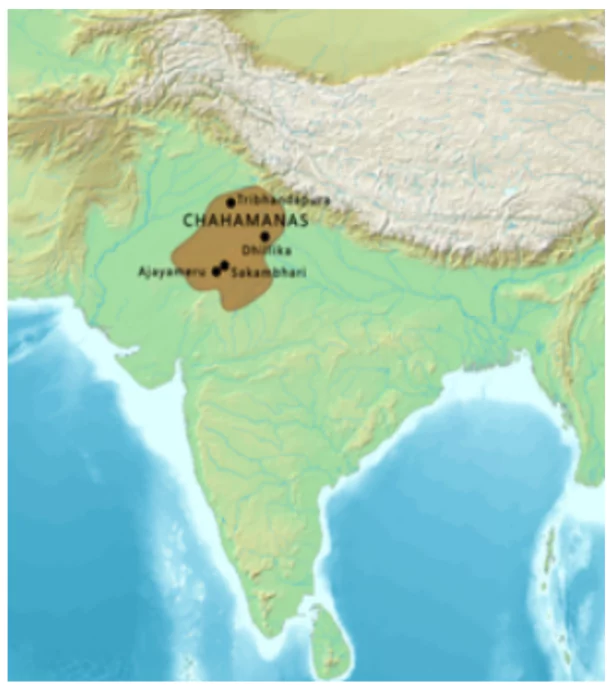![]() May 14, 2024
May 14, 2024
![]() 10271
10271
![]() 0
0
The Chahamanas, or Chauhans, of Shakambhari were a formidable dynasty that rose to prominence in medieval India, tracing their origins to Mahishmati near the Narmada River. Founded by Simharaja in the 10th century AD, they established early capitals at Ahichhatrapur and Shakambhari, later expanding their influence through military prowess and cultural patronage.
 Their early capitals were Ahichhatrapur and Shakambhari, the latter being ancient Sambhar.
Their early capitals were Ahichhatrapur and Shakambhari, the latter being ancient Sambhar.
 Wars and Conquests: Prithviraj III fought against his cousin Nagarjuna and defeated him.
Wars and Conquests: Prithviraj III fought against his cousin Nagarjuna and defeated him.
| Must Read | |
| Current Affairs | Editorial Analysis |
| Upsc Notes | Upsc Blogs |
| NCERT Notes | Free Main Answer Writing |
The Chahamanas of Shakambhari left an indelible mark on Indian history through their valour in warfare, cultural contributions, and enduring legacy. Despite facing challenges from rival powers and the eventual rise of Muslim invaders, their reign stands as a testament to the resilience and achievements of this remarkable dynasty.
<div class="new-fform">
</div>
Latest Comments